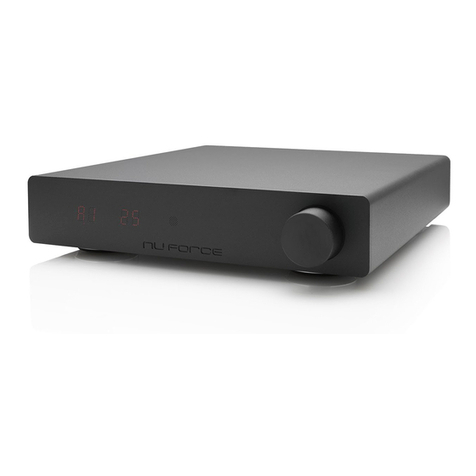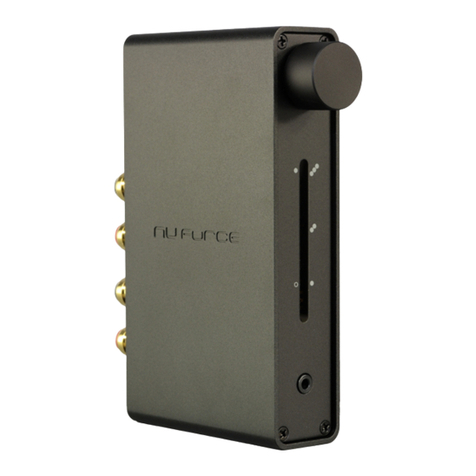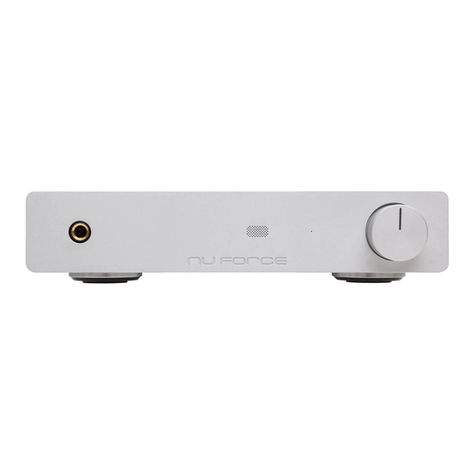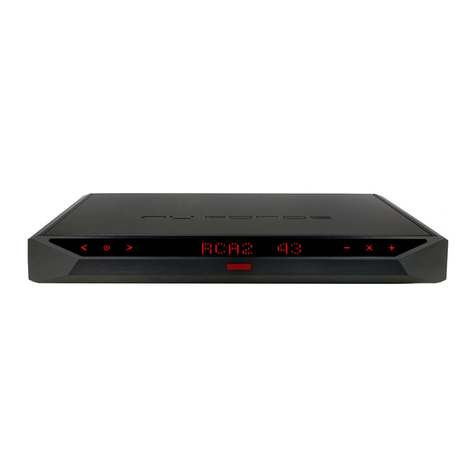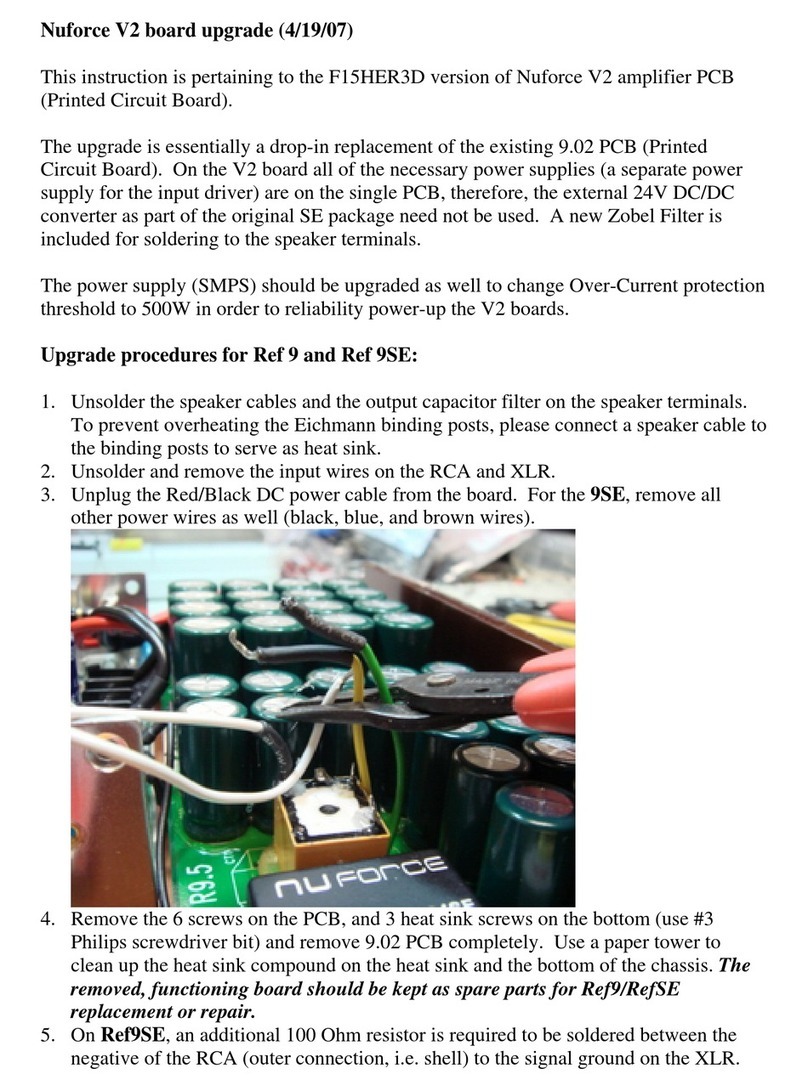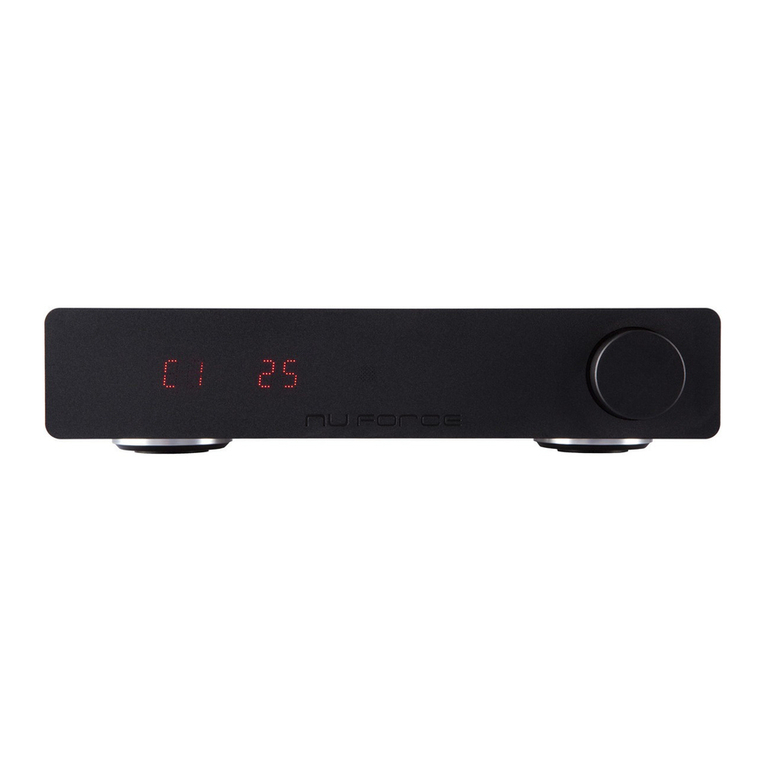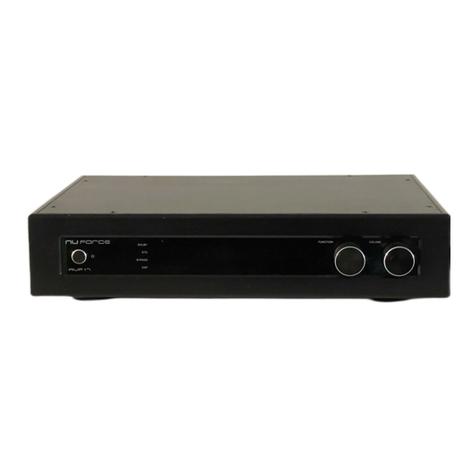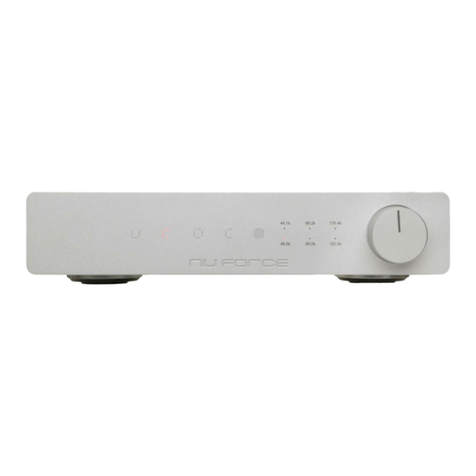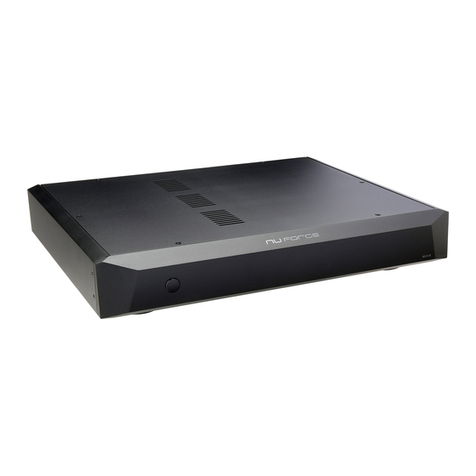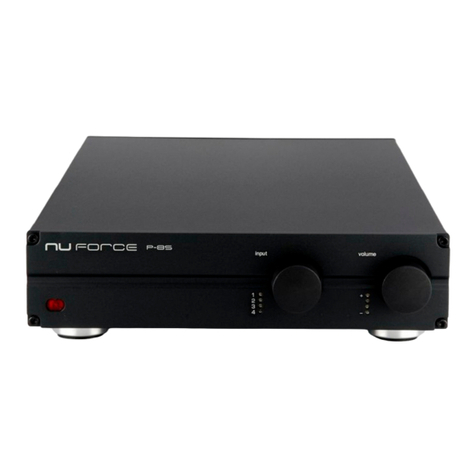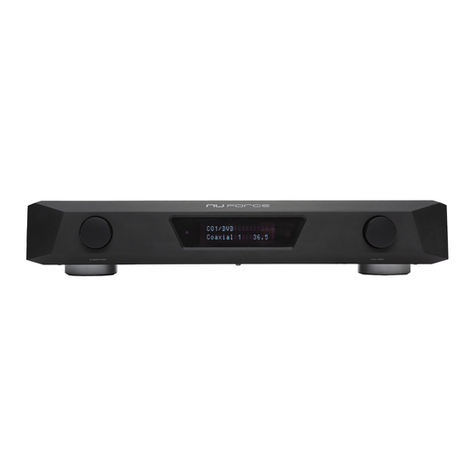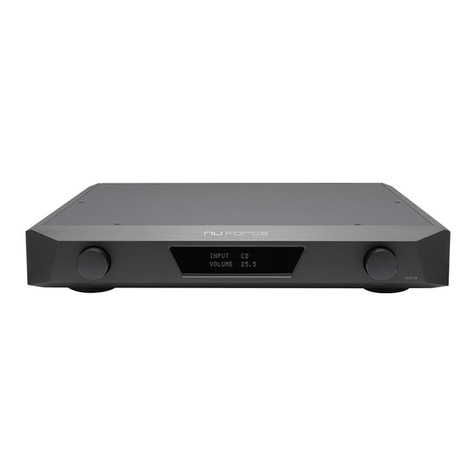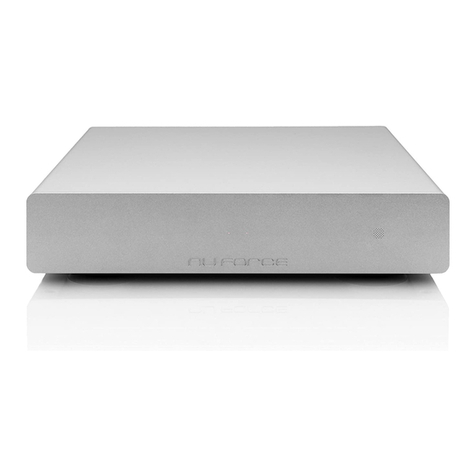
2) Immediately press the “INPUT MODE” key to select the appropriate audio
connection. Continue pressing the Input Mode key to scroll through the input
options for the selected input, which may include Analog (“ANA”), Optical (“OPT”),
or Coaxial (“COA”).
3) Choose a processing mode by pressing the “DOLBY”, “DTS”, or “DSP” keys.
Continuing to press the selected processing key will scroll through all the processing
options for the selected mode.
4) If using a video source, make sure the TV monitor is turned on and the correct video
input is selected.
5) Choose the appropriate VIDEO OUTPUT for the selected INPUT. Set the Video
connection by pressing the Composite (“CVBS”), “S-VIDEO”, or Component
(“YPbPr”) key.
6) You can quickly adjust the Center channel and Subwoofer levels by pressing the
“CENTER” or “SUB” key and then pressing the Volume up or Volume down keys to
increase or decrease the relative volume levels of these critical channels. Set the
Master Volume to a comfortable listening level before making these individual
channel level adjustments.
You are now ready to listen to music or to watch a movie using the NuForce AVP-16
as your System Control Center. Please refer to the detailed directions below to fine-
tune your audio and multi-channel settings for optimum performance.
1. Front Panel Controls
POWER:Power On/Off switch; it also activates the 12V trigger output for turning on
linked components.
FUNCTION:Push in to access the MENU; rotate to scroll between: Mode Select, Audio
Setup, Function, Return, and Input Select. Another push selects the function.
Rotating the Function knob chooses options or adjusts values for the selected
functions.
VOLUME:Volume control adjusts from 0dB to 80dB, in 0.5dB increments. Defaults to
last used setting at turn-on, or to a maximum of “60” if volume was last set to 60
or higher.
2. Remote Control
1) DIM:Turns the VFD display off or back on.
2) BYPASS: Provides a more direct signal path by bypassing non-essential functions to
preserve the highest quality audio performance.
3) DOLBY: Selects between 3CH、PROLOGIC IIx、DOLBY DIGITAL, or DOLBY
EX.
4) DTS:Selects between NEO:6, DTS, or DTS ES.
5) DSP:Selects and chooses between 8 DSP modes: Church, Hall, Theater, Rock, Pops,
Classic, Stadium, and Live.
6) INPUTS: 7.1CH, DVD, CD, Cable, VCR, Tape, Aux1, Aux2:Select the
corresponding input.
7) INPUT MODE:Selects the Audio Input mode. When input is DVD, CABLE,
AUX1, or AUX2, “Input Mode’ cycles through Analog, Coaxial, and Optical. If the
input is CD, either Coaxial or Analog is selected.
